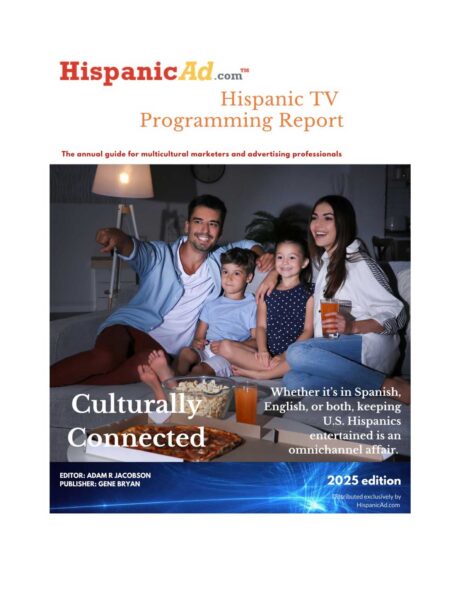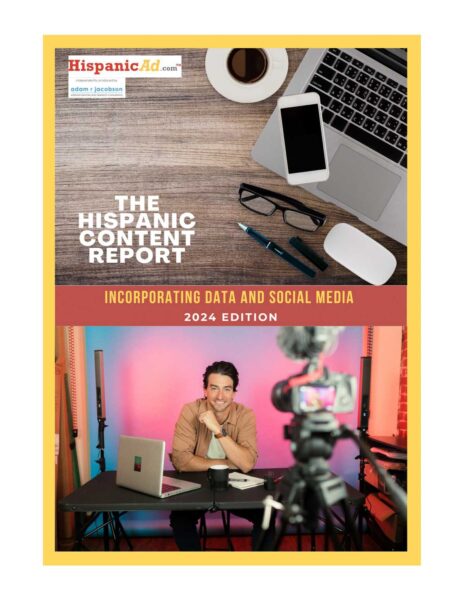Gender Relationships and Marketing within the Hispanic Culture.
February 9, 2006
Due to the fact that much of the discussion about Hispanic culture has referred back to or included family, I chose to study gender relationships and expectations for the purpose of this essay. As a result of the limited scope of this paper, I will discuss three main areas of this topic: first, the importance of family, next gender roles and how they differ for men and women, and finally machismo and marianismo and the ways they determine gender roles and expectations.
Importance of Family
It is said that one of the most pervasive values in the Hispanic culture is the importance of the family, including the extended family. The family affiliation is so important that “parenthood” is often seen as important as “partnerhood”. The primary goal of marriage is to have children and the family life that ensues. In a study completed with Latino couples that had strong marriages, it was clear that the concepts of marriage and family were perceived to be the same. In response to researchers’ questions about marriage, participants provided descriptions of their family life including their children and then they went on to describe the importance of the family, while ignoring the researchers’ references to marriage. The couples in this study also indicted that they typically did not want to engage in activities, including marriage education, without their children. Members of the Latino community enjoy large extended family networks and these networks serve a variety of functions. There is extensive visiting and other exchanges among extended family members when they live in close proximity to one another. Although couples that had strong marriages valued their extended family connection, they made it clear that their spouse and children were their first priority. It is likely that, at times, the demands of extended family members also create a burden on the nuclear family. In fact, couples who had strong marriages concluded that supporting their extended family financially and emotionally was important, but at times created stress for the family.
Having said that, the family unit, as seen in my interviewing of Hispanic persons in Tallahassee, clearly demonstrate the idea that the family unit strengthens in times of crisis and that it is a warm and nurturing environment, solidified by age-old customs and traditions. This directly impacts familial and gender relationships.
Gender Roles
In most societies, biological sex provides an organizing framework for how individuals are treated and how they are expected to behave. One major limitation of research on gender socialization, which largely dictates gender roles, is its lack of attention to ethnic differences, however, and this idea was reiterated throughout my research. To date, most U.S.-based studies of normative development have involved primarily European American samples. The shift in focus is warranted given the general lack of information about Latino/a families and the fact that by the year 2050, approximately one-third of the under-age-19 population in the United States will be Latino/a. Although the diversity within this population makes it unwise to generalize too broadly about group beliefs and practices, scholars have identified a set of cultural values that are relevant to gender-related socialization and expectations in Latino/a families. One value is familismo, an emphasis on family relationships and a strong value placed on childbearing as an integral part of family life and the feminine gender role. Another value is respeto, which refers to an emphasis on respect and hierarchy in social relationships. Finally, traditional Latin cultures are marked by strong gender role divisions. The idealized traditional feminine gender role involves being submissive, chaste, and dependent, whereas the masculine gender role involves being dominant, virile, and independent, according to a number of sources. Some scholars have criticized this depiction of traditional gender roles as stereotypical and invalid; however, there is empirical support for the notion that traditional values regulate the sexual behavior of many Latinos/as. For example, among Mexican American adolescents, partner preferences reflect the cultural values of respeto and familismo as well as traditional hierarchical gender roles.
When researching gender relationships in the Hispanic culture, there appeared to be a fairly rich body of literature discussing gender socialization discussed in the context of sexuality and HIV/AIDS but not as much discussion about how families typically behave in their daily lives; I believe if I were Hispanic and researching this topic, the broad generalizations employed would leave me feeling very frustrated and outraged. However, I did find some research concerning socialization of gender roles and expectations. Several scholars did note that boys and girls are socialized differently, particularly, again, when concerning sexuality. This socialization, though, does seem to influence gender relationships and expectations. In focus groups conducted with Puerto Rican and Mexican adolescent girls and their mothers, family beliefs regarding the importance of maintaining teenaged daughters’ virginity were linked to the establishment of roles regarding dating and contact with boys; sons did not have similar limitations, however. Interesting to note, I believe too, was the discussion on the virgin/whore dichotomy often found in Hispanic literature, which is largely specific to Hispanic culture. It goes that, deeply rooted in Catholicism, young Hispanic women must be virgin-like and if she is not, then she is a whore; no middle ground remains, and there is no room for compromise so one is either completely pure or completely disgraced. Hispanic culture extends religious doctrine condemning fornication and promiscuity into social mores associating attractiveness with immoral behavior, and this deeply embedded more, although obviously changing with time, impacts gender roles. Another study of familial socialization revealed that many Hispanic females were discouraged from becoming romantically involved while living at home and that parents limited the girls contacts with potential romantic partners, especially away from the home and this studies subjects were quoted as saying that “their parents are too strict, treat their daughters differently than their sons, and are too concerned about their safety”. I found this sentiment to be true with the four groups of people I interviewed at the Tallahassee flea market over the weekend. All of the groups were families who were vendors within the flea market and three of the four groups were originally from El Salvador, with varying degrees of acculturation. The girls in my interviews all emphasized their feelings that their brothers, and men in general, were given a much easier time with things than they were and that as young ladies, they were responsible for helping with cooking, cleaning and child rearing while their older and younger brothers were free to go out until their curfews, occasionally went with their father’s to construction/job sites, and were not given the “5th degree” of questioning if they returned home late or without calling. Each of the three girls I interviewed, ages 18 to 22, still lived with their extended families and all were born in the United States, with their parents moving for a better life from El Salvador.
Further, my interviews and those of other researchers all seemed to reveal three overarching themes as related to gender socialization and expectations: differential treatment of girls and boys, enforcement of stereotypically feminine behavior among girls, and curtailment of girls’ activities outside of the home. Gender role differentiation and privileging of boys in families with both sons and daughters were frequent themes, where daughters were expected to help around the home and with kids and boys were not.
Another source discussed the idea that Hispanic gender roles are often conflictual in nature, especially for women, as traditional roles of motherhood, family responsibilities and expectations, and academic success can often come into conflict. Interestingly but not surprisingly, studies have shown that equal male-female role attitudes among high school girls in Venezuela contributed positively to self-image, self-esteem, sex role orientation and achievement and encouraged the young women to think of a broadened array of work, career and family possibilities that had largely not been part of the cultural socialization process previously. These traditional gender roles in the Hispanic culture greatly affect marriage and family dynamics.
Machismo and Marianismo
Two terms are commonly discussed to describe gender relationships and expectations in most of the literature I found. First, machismo refers to maleness or manliness and it is expected that a man be physically strong, unafraid, and the authority figure in the family, with the obligation to protect and provide for his family. One must be careful not to generalize, however, as all Hispanic men are not dominant and certainly, according to my research and in the course of my interviewing, not all women are submissive. In fact, as the Korzenny and Korzenny text discusses, among many other authors, machismo can mean a nurturing and protective man and this one-sided, more violent view of machismo is often reinforced as much by American culture and the stereotypes placed on the word as by Hispanic tradition.
The complementary role for the traditional Hispanic woman is Marianismo, referring to a woman who is self-sacrificing, religious, and is responsible for running the household and raising children. Motherhood has traditionally been, according to my research, an important goal for women in Latino culture, and a mother is expected to sacrifice for her children and take care of other relatives; further, although acculturation and the need in most of America for two household workers have affected these gender roles, studies show they still persist and are likely to be even more pervasive for low income families. This evidence appeared in my interviewing of individuals as well, where two of the three young women were married and planned on having children as soon as they could. Additionally, although they worked with their families at the flea market, it was their husbands who carried the weight of earning enough for their families. Due to limited funds, each of these women (and their husbands) continued to live with their mother and/or father and siblings. However, there was a great deal of joy and giggling when it came to the mothers talking about wanting grandchildren out of their young daughters soon. In any case, while it appears true, given the feedback from interviewees and the research I conducted, that Hispanic women are generally expected to defer to their male partners, upkeep the home, raise the children and maintain strong relationships with their extended families, changes are happening, much as they did with most American’s with the emergence of the post-industrial revolution. Additionally, I think it important to note that while it may be somewhat frustrating, especially to outsiders, to find these gender roles as somewhat outdated (although by no means non-existent in the Anglo household!), it can absolutely be viewed as a strength as well, as the family as a means of support and cohesiveness often puts women in the best position to utilize the familial resources.
Conclusion
Gender roles and expectations are certainly a product of many factors, including cultural expectations and norms, religious affiliation and emphasis, as well as socialization of children born abroad and in the United States. It seems that American studies of Hispanic families are often the product of prolonged stereotypes, examining the “problems”, rather than the strengths and beauty, of the Hispanic family, viewing the Hispanic family as authoritarian and/or macho-dominant, saying this has impeded individual achievement and independence of both men and women, as well as equality in relationships. These stereotypes that may or may not be applicable to Hispanics as a marketing segment can greatly impact the success of marketing strategies, particularly the ways in which men and women are portrayed. One must consider, too, that there are many similarities in U.S. and Hispanic gender roles and times are certainly changing. For example, both American and Hispanic cultures have designated men as the usual wage earner, both cultures give men family members more privileges/leniency and both consider family an integral part of their lives and the reason they strive for wealth. Data suggests, too, that changing gender roles in the Hispanic family will continue to fuel more opportunities for women outside the home. Statistics offered by Hispanicbusiness.com illustrate this changing force, whereby 91% of Hispanic women (compared to 83% of non-Hispanic women) agree that “women have as much financial responsibility to support the family as men do” and 18% of Hispanic women versus only 1% of white women, are “saving to start a business”. These are just two examples of the ways in which acculturation, changing of economic conditions, further immigration, and changes in socialization may impact Hispanic roles and relationships in the future. Conversely, the way in which the Hispanic family operates and embraces the different gender roles and expectations may serve too to influence more mainstream ideas, showing that embracing the separate spheres in not necessarily a normatively bad thing but instead serves to empower both men and women in their own ways. One would need to consider to whom they are trying to target and study the way gender expectations and relationships affect that group more specifically; for example, lower income Hispanics tend to hold onto the traditional gender roles and divisions more fervently than their affluent counterpart. The gender expectation and relationship question is a huge one for marketers to consider.
By Jennifer Kilinski
Florida Sate University
jl****@*************su.edu






























